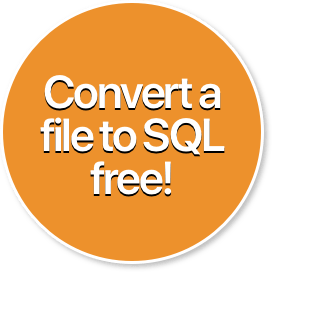[Update 2024] Converting a Word Doc to SQL with SQLizer
Wait, what? A Word document?
Have you ever found yourself faced with a Word document containing a wealth of data, all neatly structured in a repeating pattern, and wished to seamlessly migrate it to an SQL database for robust querying and manipulation?
Well, prepare to have your mind blown: A Word document, in the docx format is just a compressed zip file housing various xml files. It’s fascinating how seemingly mundane formats can harbor hidden potential. Let’s dive into the process of converting a Word document into an SQL database using SQLizer. Here are the steps:
Step 1: Extract the Word Document
To get started, you need to convert your Word document into its raw XML form. Follow these steps:
- Change the filename by appending
.zipto the end of the Word document’s file name. -
If you’re using Windows, you can use a standard unzip application to extract the document’s contents. If you’re on a Mac, open the terminal and use the following command:
unzip filename.docx.zip -d output-path
Step 2: Locate the XML Document
Once you’ve successfully extracted the contents, you’ll find a folder named word within your designated output-path. Inside this folder, you’ll discover a file named document.xml. This XML file contains all the structured data from your Word document.
Step 3: Convert with SQLizer
Now, it’s time to leverage SQLizer to convert the extracted XML file into a structured SQL database. Follow these steps:
- Visit SQLizer’s website at SQLizer.io.
- Upload the
document.xmlfile that you extracted in the previous step.
By default, SQLizer will provide you with an INSERT statement for each paragraph and heading, creating separate rows in your SQL database. This data will be ready for you to perform your SQL magic, enabling you to do intricate queries and data manipulations.
Conclusion
Although converting Word documents to SQL databases isn’t an everyday task, SQLizer comes to the rescue when those unique scenarios arise. Its straightforward process allows you to efficiently transform Word documents into structured SQL databases, unlocking the full potential of your data. So, the next time you receive a Word document filled with essential information, you’ll know precisely how to convert it into an SQL database using SQLizer.
🖤 SQLizer team.
Hello there! SQLizer has some exciting news for you. If you’re considering data conversion, here’s the deal: For personal projects with fewer than 5,000 rows, it’s completely free!
If you’re dealing with a hefty CSV file containing over 5,000 rows that requires SQL treatment, we gotchu. Simply use the code CONVERTME10, and you’ll enjoy a 10% discount on your Pro Monthly plan for the first 12 months. Alternatively, if you’re thinking long-term, grab a one-time 10% discount on your Pro Annual plan. It’s a win-win, no matter how you look at it!
More from The Official SQLizer blog...
- Announcing the shutdown of SQLizer SQLizer is shutting down on Sunday August 31, 2025. Sadly, after 10 years and billions of rows of data, it’s time to say goodbye to...
- Convert Anything to SQL for $9 - Unlimited Rows It’s back! Many moons ago, we offered a 24-hour pass on SQLizer, and we’re thrilled to announce that it’s back once again! With this offer,...
- All new: A JavaScript Client for SQLizer on npm Rejoice, JS developers! A JavaScript client library for SQLizer.io, easily converting CSV, JSON, XML and Spreadsheet files into SQL INSERT or UPDATE statements - is...
- [Update 2024] Convert JSON to SQL: Free and Fast If you want to convert JSON to SQL there’s no concrete or straightforward way of doing things. Conversion is usually tricky because JSON and SQL...

